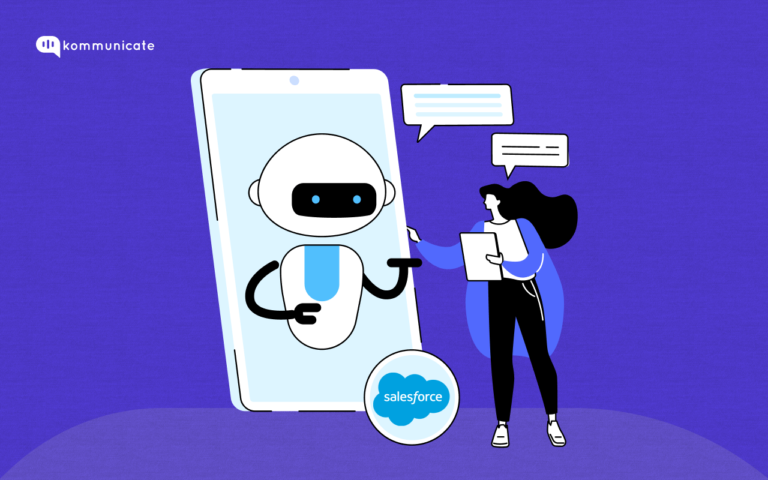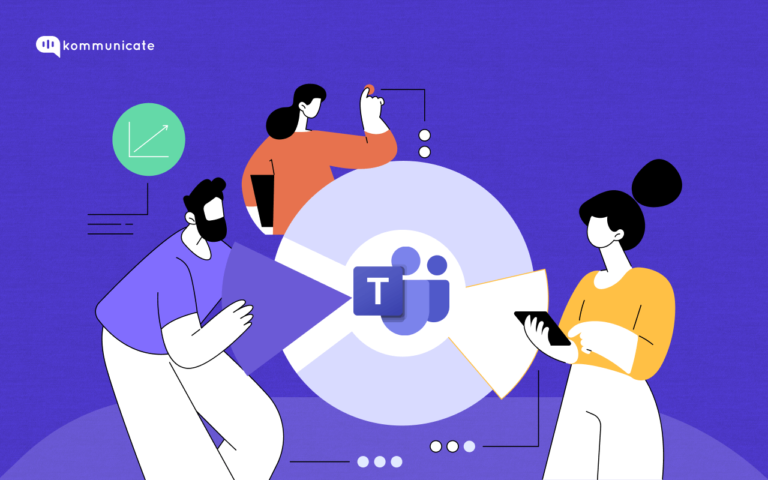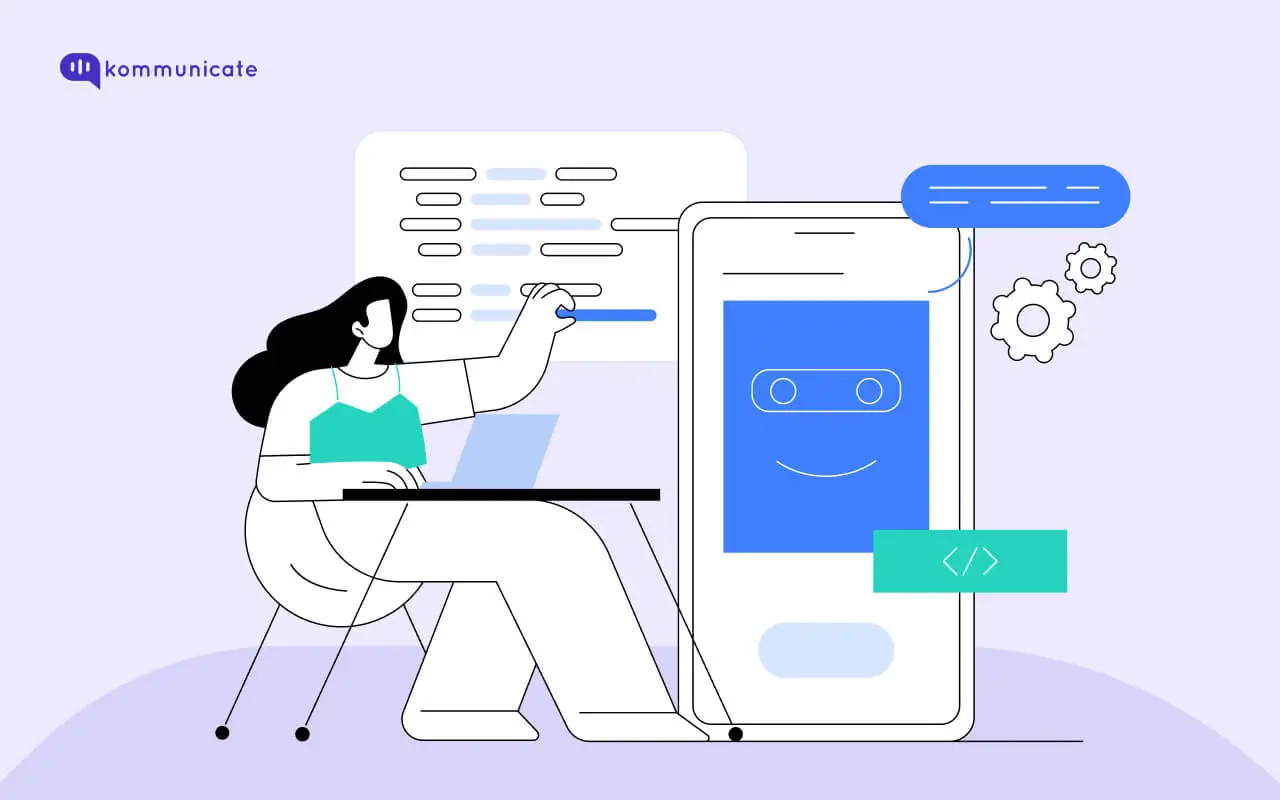Updated on February 22, 2024
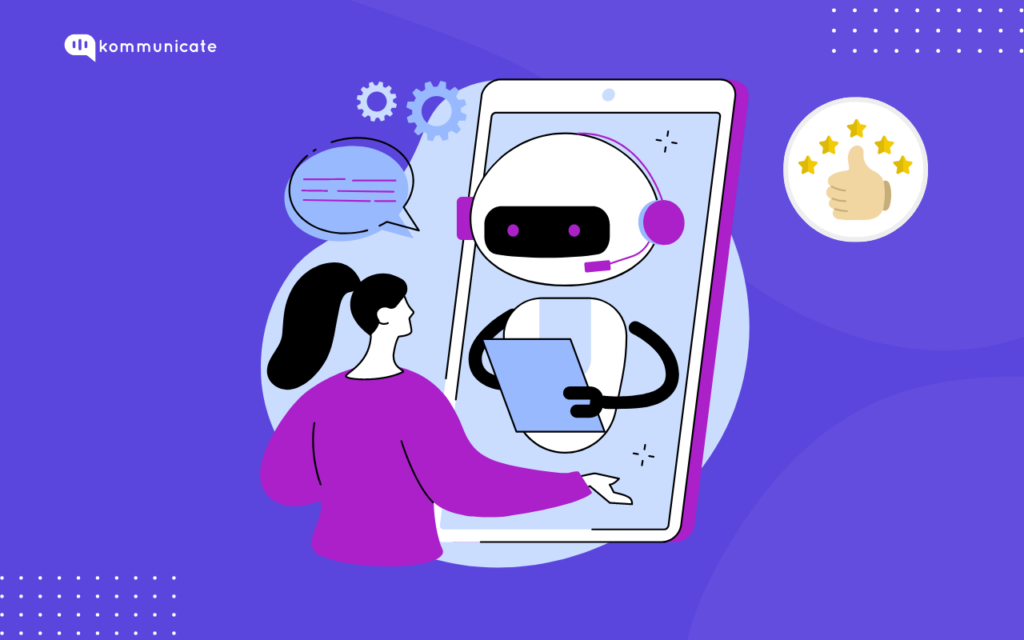
One purchase. Two scenarios.
Imagine you buy the latest iPhone from an eCommerce store, and are returning to buy an accessory.
Scenario 1: You get a welcome message as soon as you login that says, “Welcome back John! We are so glad to meet you. What do you want to pair with your iPhone today?”
Scenario 2: You get a welcome message that says, “Dear customer. Thank you for your visit. What can we help you with today?”
Which eCommerce store are you likely to visit again?
If your answer is the store from Scenario 1, congratulations. You are part of the majority.
In fact, according to this research by Segment, 71% of customers are frustrated with impersonal shopping experiences.
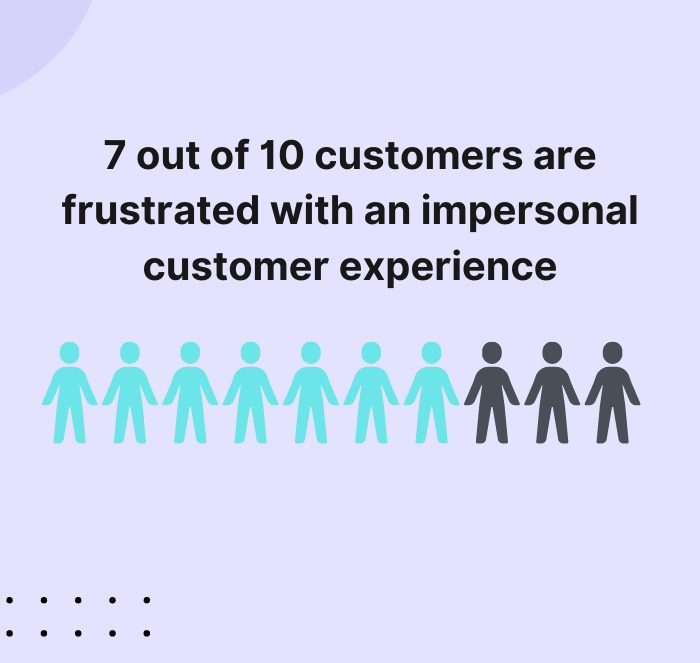
Which leads us to the mother of all questions – Why do customers prefer one website over another? There is subtle Psychology at play here, which is that people prefer to be called by their name rather than an impersonal “Customer.”
The technical term – Personalization.
So what is personalization? And how do you personalize at scale to provide all of your customers with a unified personal experience?
We have the answers in this blog post.
What is personalization?
Every customer’s journey is different, and personalization means “curating individual customer journeys by leveraging data and insights, to deliver content that is relevant to the customer.”
When you use what you know about a user to provide a user experience tailored to their needs, THAT is product personalization.
Personalization leads to increased customer delight, customer engagement and better customer retention.
As a PM, it is vital to understand the importance of personalization at scale, as it helps drive competitive advantage and deliver exceptional customer experiences.”
Importance of personalization in customer experience
- Surveys that gather behavioral data.
- In-app Messaging.
- On-boarding flow.
- Sign up page.
What do these have in common? Other than the fact that they are all crucial aspects of a customer’s journey, these are all stages that can be personalized.
Personalization can help you create meaningful and relevant experiences that resonate with customers on a deeper level. It enhances customer satisfaction, improves engagement, and fosters loyalty in the long-term.
Understanding the customer, giving them relevant information, and ultimately, driving value. These are the 3 pillars of a perfect personalized experience.
Let us see how Canva uses personalization during their onboarding survey that makes customer’s lives that much easier.
When you sign up for Canva, they ask you if you are going to use the product for?
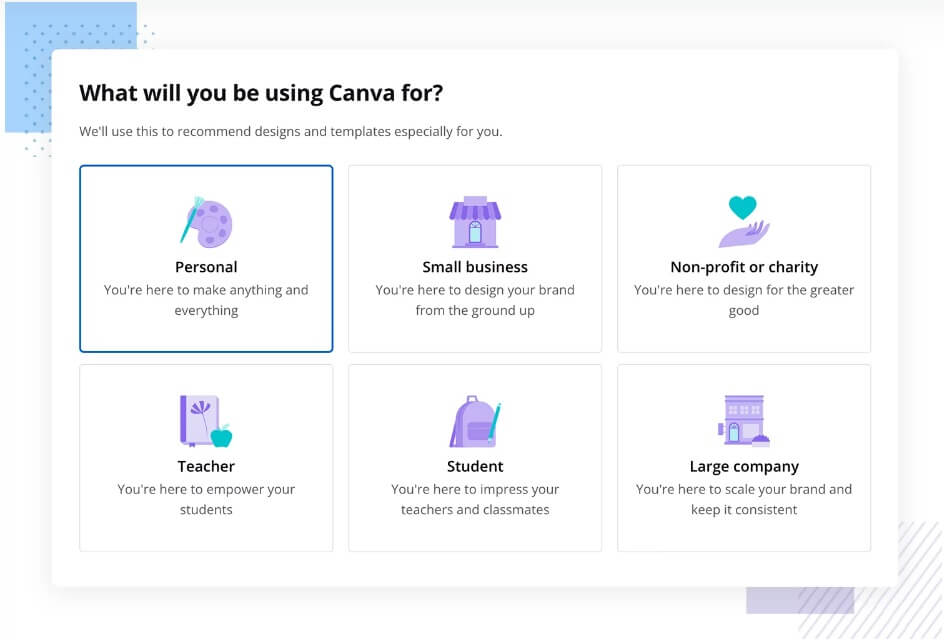
Based on the customer’s choice, Canva then classifies them into clear categories, and delivers a personalized experience to each user category.
Now, Canva goes one step further and shows the users what other users in the same category have chosen, completing the user journey.
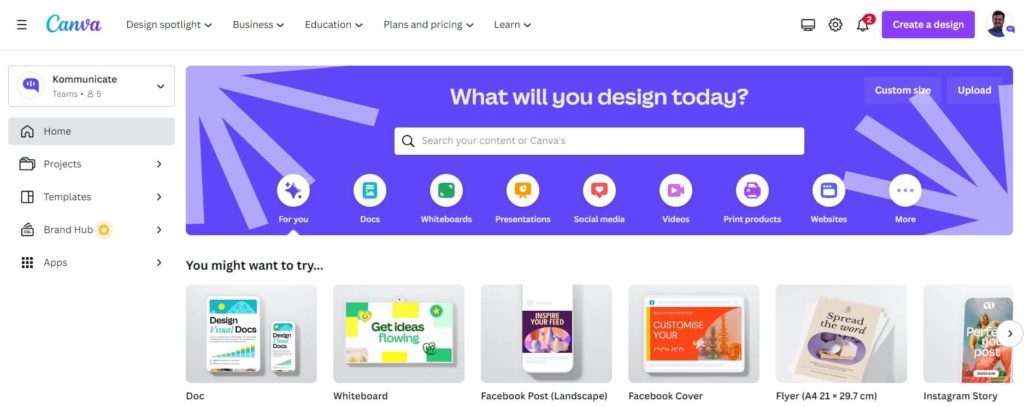
Personalization at Scale: The essentials
When delivering personalization at scale, it is important to keep in mind a few important aspects. Before we tell you what they are, here is how we can define “Personalization at Scale”
Definition: Personalization at Scale refers to the ability of a company to deliver tailored experiences to a large customer base. This involves leveraging data, automation and technology to study customer’s behavior, and then deliver them relevant content.
As a Product Manager, personalization at scale enables you to create engaging, contextually relevant customer experiences that drive customer loyalty and business growth.
Delivering personalization at scale used to be a challenging exercise, but all that changed with technology.
Remember the old magazines that you came to your doorstep in the 90s that your parents had a subscription to? They had a typewritten address stamp that was probably made by a team of dedicated people in the mailing room. This was one of the earliest examples of personalization – we are talking before the internet era here.
Today, companies use a wide variety of techniques to make sure that customers feel at home right from the moment they show interest in the company’s product. The reason?
Companies today know that:
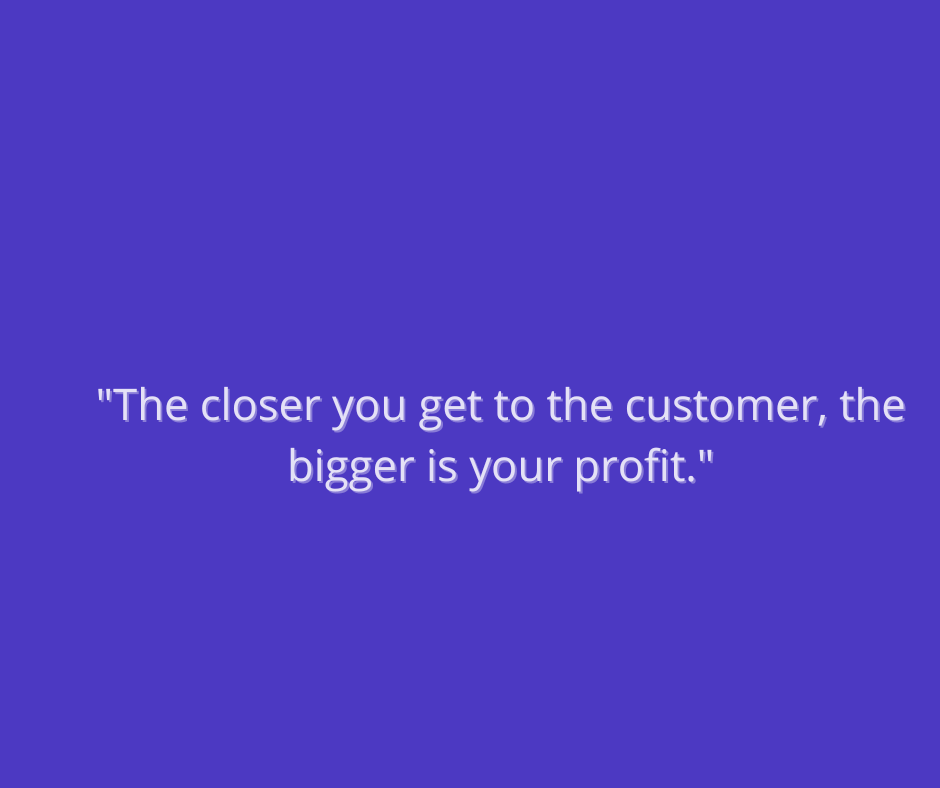
Tesla is a car brand that is favorite among EV enthusiasts, and the brand takes driver personalization one step further. Tesla’s model 3, for example, remembers the position of the driver’s seat, exterior side mirrors, or steering wheel position.
It then saves it as an individual “Driver’s profile,” and the Model 3 comes with the ability to store up to 10 such profiles.
This is a classic example of how a brand can deliver personalization, at scale, and win the hearts of the consumers.

Technology to speed up things – Helping accelerate personalization at scale
Technology has been instrumental in dictating consumer behavior, and we have gone from browsing for products on our desktops to purchasing household appliances using our smartphones in less than one decade.
The number of E-commerce websites and Apps continues to grow everyday, and, by the year 2030, the global E-commerce industry will touch $62.4 billion.
Customers are spoilt for choice when it comes to a choice of an online shopping destination. The only way you can differentiate yourself from the competition is by delivering massive
Value, or, by personalizing to a degree not seen before.
Artificial Intelligence, Automation and Machine Learning all enable analysis of vast troves of customer data. This means you can identify patterns and preferences faster than ever before.
With predictive models, it is easy to automate personalization at scale, tailoring content and experiences based on individual customer behavior and context.
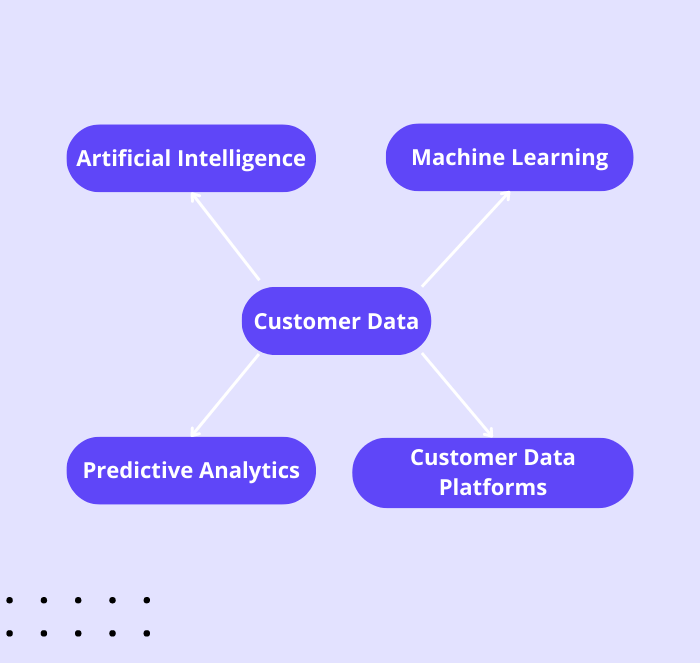
Which brings us to the next part of delivering personalization at scale – Chatbots.
An introduction to chatbots:
Chatbots are computer programs that mimic conversations with human beings, using Natural Language Processing and Artificial Intelligence.
Chatbots are smart, and are getting smarter by the day.
We have written everything you need to know about chatbots in our guide, which you can explore here.
Chatbots were difficult to build, but, like everything else we have talked about, technology has been changing the way chatbots are built and deployed.
In fact, today, using tools such as Kommunicate, you can be up and building a chatbot in less than 10 minutes.
Chatbots can help in qualifying leads, in automating repetitive tasks, and making your website experience that much smoother.
One other thing chatbots can help with? You got it right – Personalization!!
Benefits of chatbots in driving personalized experiences:
Here are a few benefits of using chatbots on your website or mobile app and how they can help you deliver personalization at scale:
1 . Chatbots are available 24/7:
Your customers may be sitting around the globe, and expect your business to cater to their needs at a time that is convenient to them. This means keeping your business open 24/7, and chatbots are the perfect way of achieving it. Chatbots provide immediate assistance and enhance customer experience.
2. Powerful recommendation engines:
Chatbots make use of advanced algorithms and data analysis to offer customers personalized product recommendations. They make these recommendations based on a customer’s browsing history and purchasing behavior. This type of recommendation improves up-selling and cross- selling opportunities.
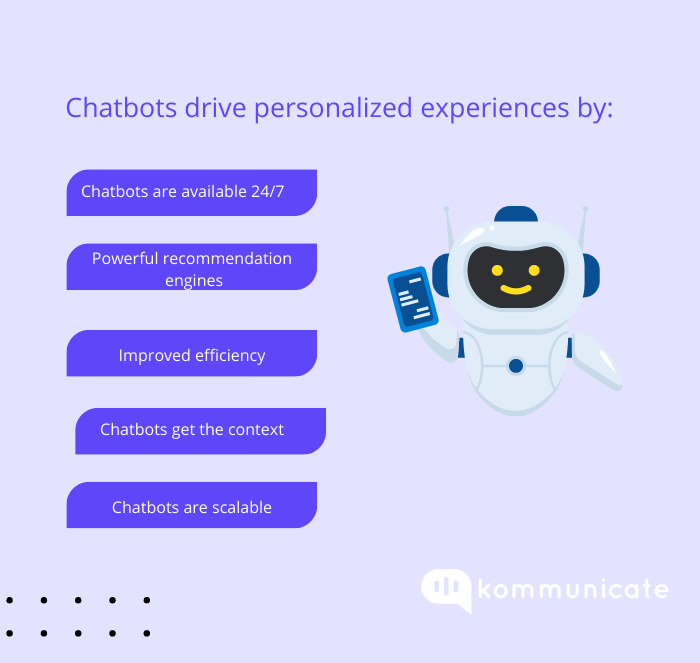
3. Customer service is more efficient:
Chatbots can handle repetitive queries, which will free up your human agents to handle the more complex tasks. Chatbots can thus reduce wait times and improve the overall customer satisfaction.
4. Chatbtos get the context:
Chatbots use machine learning to learn more about the customer, by using information and context from customer conversations. This allows for more relevant responses, enhancing customer experience by providing accurate customer support.
5. Chatbots are scalable:
Chatbots can handle a lot of customer queries at the same time, which means you can scale a customer’s personalized experience across a large customer base. This trait of the chatbots proves to be extremely useful, especially during a surge in customer queries.
Data collection and chatbots
Chatbots have access to troves of customer data, and you can leverage this data to provide a more robust customer experience. By analyzing and understanding customer preferences, behavior and interactions, chatbots can create customer profiles and generate insights.
Chatbots can then use this data to provide experiences that are tailored to individual customer profiles, for instance, customized offers and personalized responses.
Chatbots can also use machine learning algorithms to continuously learn from customer data and refine their understanding of the customer. They can then adapt to the preferences of an individual customer.
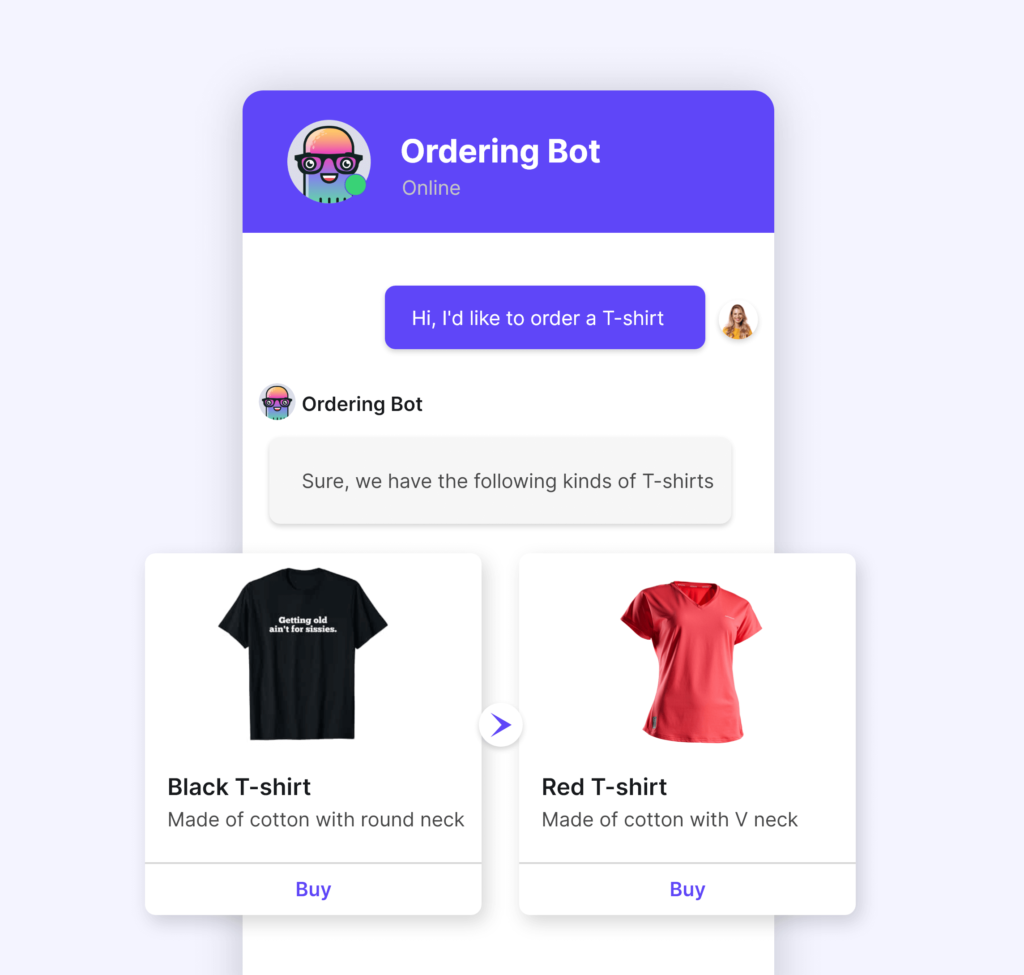
By providing a more personalized experience to the customers, chatbots enhance the customer experience and foster stronger customer relationships.
Pillars of a personalized customer experience
We have seen how chatbots can help in providing personalization at scale. But how do you define a great, personalized customer experience?
We believe there are 3 pillars that hold the key to every great personalized experience. They include:
1. Real time customer engagement and support
Technology, chatbots to be specific, help you engage with your customers in real time. This is of utmost importance while providing a personalized customer experience.
When you address customer concerns in real time and provide a solution to a customer query in the least amount of time, you are removing a lot of friction from the entire customer experience.
2. Tailoring content according to customers needs
When a customer sees something that he may like / was interested in but never really got to explore, on their feed, there is an “AHA” moment.
This is when you know that your personalization efforts have won.
A classic example of this is Netflix, which provides you custom watch lists based on your previous watching history. There have been exhaustive articles online that attempt to guess how Netflix’s recommendation engine works. At the end of the day, Netflix is a classic example of how a company uses customer data to keep the audience engaged.

3. Understanding different contexts and providing proactive support
The third pillar of providing a great personalized customer experience is your ability to understand the different contexts of a customer’s conversation. The next logical step is to provide proactive support so as to address all of the customer’s issues immediately.
A great way to see this in action is an E-commerce website, where chatbots can anticipate what the customer is going to ask for and then provide a solution for the same.
For instance, check out this chatbot that we built for GAP Chile’s website. The chatbot gives customers information about the order such as Order status, Order information, Returns etc.
Customer’s don’t have to navigate GAP’s website to get to a specific point, and all they have to do is keep their order details handy.
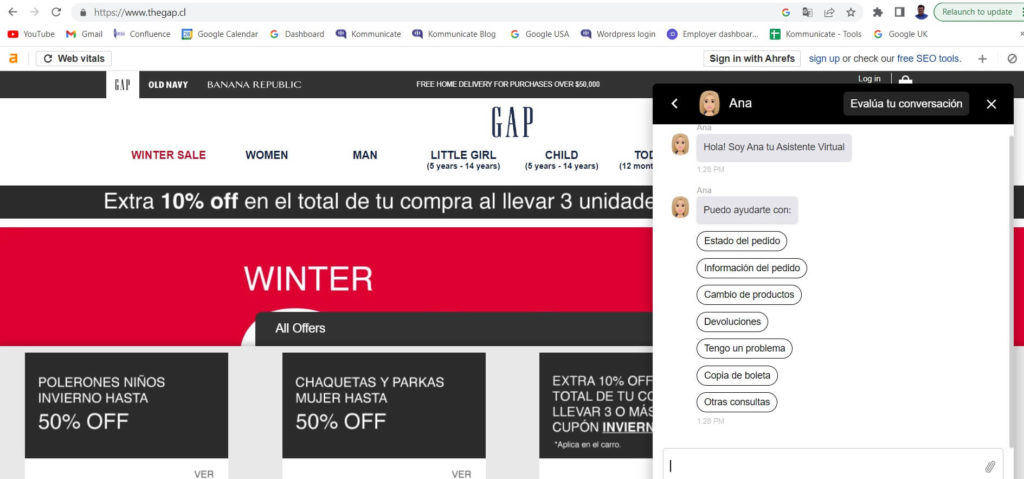
You can read the entire story of how Kommunicate and GAP came together to streamline customer queries here.
As we can see, chatbots can act as a vital component in personalizing customer experiences. But is it as straightforward as it seems?
The answer is no, and we would be lying to you if we say otherwise.
Having built chatbots for more than half a decade for over 500 customers, we know a thing or two about the challenges involved.
Here are some of them:
Challenges involved in providing a personalized chatbot experience
1. Striking a balance between automation and human touch
Chatbots are software programs, but, as the definition implies, they are a software program and may never be able to replace an actual human being. There is still a large portion of online users who prefer speaking to an actual human being.
To back this up with data, a survey by CSA found that eight in ten people (77%) prefer interacting with a human being over a chatbot. So the need of the hour is striking a fine balance between building a bot to automate and providing an experience on your website that will keep the customer happy.
As a Product Manager, you must ensure that there is a fine balance between the parts of a customer journey that can be automated and parts that need a human touch.”
One way to achieve this is a seamless bot to human handoff. Whenever your chatbot is unable to answer a particular query, it should be transferred immediately to a human agent.
This way, the customer feels that they are an important part of your business, and you ensure that you are not losing out on some valuable business.
2. Privacy concerns and data security
Chatbots can handle a lot of data, and, with such big data, comes the problem of security. Customers are more and more skeptical about big tech firms selling out their personal data than ever before.
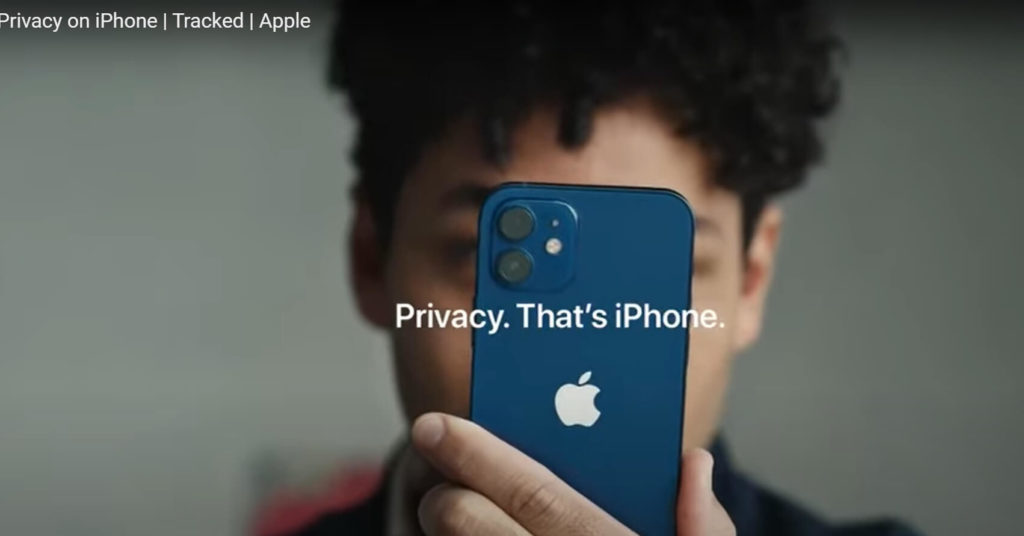
Case in point: Check out this Apple Ad where they gave a not-so-subtle slap in the face to other tech companies that seemingly have all the data on you. The world is becoming increasingly digital and more and more customers are divulging their personal information.
It is only natural then that customers want to keep their data as secure as possible, and regulations like HIPAA and SOC2 have been put in place to ensure data security. Keeping customer’s data secure from breaches is thus one of the chief concerns when it comes to providing personalization.
3. Handling complex use cases
As chatbot builders, we have learnt that no two customers are ever the same. Some customers might want a simple chatbot, whereas others are more complex and require hours and hours of training.
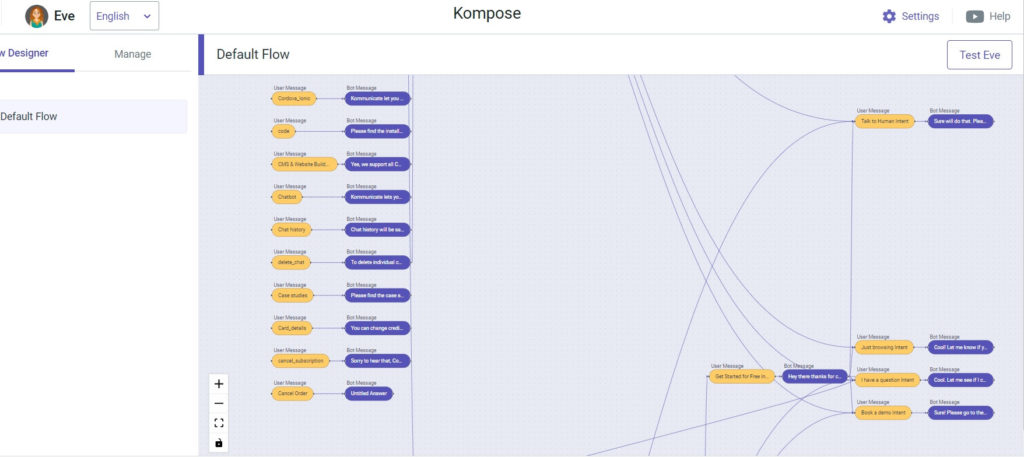
As the use case gets more and more complex, providing personalization at scale becomes a challenge. Hence, if you are asking a customer for feedback or their details, we highly recommend keeping the bot flow simple.
Make things easier for the customer to find and interact with, and they will thank you for it.
4. Scaling personalization across regions and different channels
One of the major challenges with personalization is that we need to provide a unified experience across different channels. This means that if the customer is visiting your website, or your mobile app, or your web app, they must not be able to distinguish the difference.
While easier said than done, providing an omni-channel experience is one of the most challenging aspects of building a chatbot. Another key challenge is to address people who may not be speaking the same language as you, which is where multilingual bots come in.
With multilingual chatbots, customers can today interact with your business in a language they understand. This is an important feature to have, and, if you are considering investing in a chatbot solution, should be on the top of your priority list.
Future of Personalized Customer Experiences
As we type this out in 2023, the devices are getting smaller, smarter and more seamless. Smartphones today can be folded, swiped or, as in the case of Hu.Ma.Ne, be clipped to your jacket!!
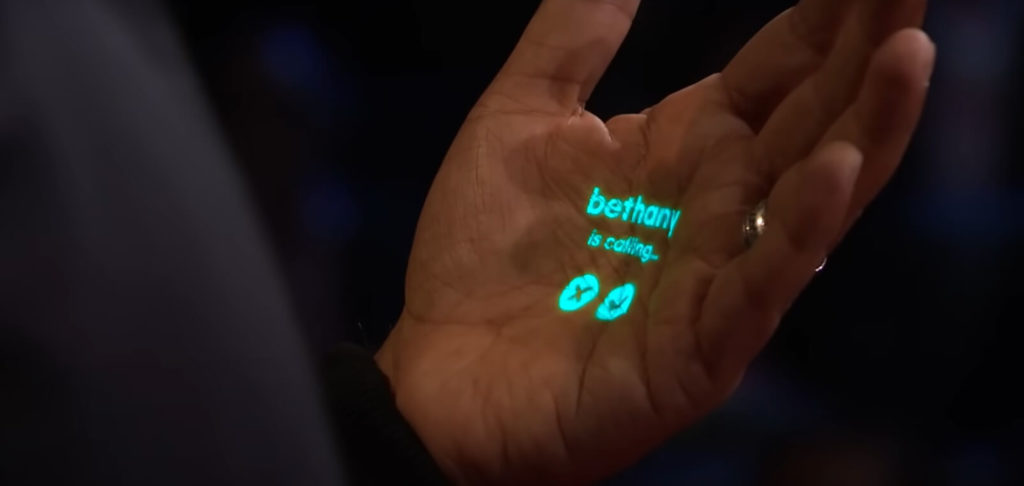
What we envision is a future where customer’s devices themselves start personalizing their journey, even before they visit your business website or mobile app.
Chabots may also find their way into the virtual reality universe, which we are going to explore next.
Chatbots in VR/AR – They are now closer than expected
While Mark Zuckerberg’s Metaverse may be dying a slow death, the folks at Apple have taken AR/VR to the next level by introducing Apple’s Vision Pro at this year’s WWDC event.

We can now see a future where hyper-personalized content will be delivered, via a chatbot, right to your VR/AR set. The chatbot that is part of the OS of your vision set will ask you a few basic questions, and create a personalized profile of you.
Based on your interests and mood, the chatbot will then curate content, which may include movies, TV shows or songs that you can choose from.
Chatbots can also help you get to your files faster, as you navigate through your folders using your eyes and hand gestures.
And if you feel chatbots are just going to take over your VR sets, hold your horses.
Advanced Chatbots like ChatGPT and Bing are taking sophisticated chatbots to the next level.
ChatGPT and Bing – Taking chatbots to the next level
With ChatGPT, there was a silent revolution in the world of Artificial Intelligence, which slowly started in November last year. ChatGPT was touted to be the “Google Killer,” and doomsday prophets made tall claims that the world will never be the same.
They were right, but only partially.
You see, Large Language Models (LLMs) like ChatGPT and Bard represent an important evolution in the journey of chatbots, and we envision a future where you won’t have to type in a query into a search engine, since a chatbot will be able to give you a much more concise answer.
ChatGPT can code, ChatGPT can write, and, if this article is to be believed, ChatGPT4 can develop entire plots and character outlines for a novel.

ChatGPT will be used by patients to summarize their doctor’s reports, to study their diet and suggest changes in their nutrition, and even as a personal assistant or a friend.
Large Language Models are here to stay, and they will continue to use the latest in NLP and NLU to make interactions between humans and computers as seamless as possible.
Parting words
We have seen how customization can deliver superior customer experiences, and enhance brand loyalty. Chatbots will act as a vital source of data collection in the future. Advances in artificial intelligence and machine learning algorithms will take you closer to the customer than ever before.
But there is a caveat.
There should be a fine line drawn between collecting customer data for personalization and collecting it as a commodity. Analyzing purchase history and browsing patterns to provide tailored recommendations is one thing. Selling customers data to third parties who may use it for marketing or advertising purposes is a complete no-no.
Walk this fine line carefully, and you will be seen as a business that truly cares for its customers.

CEO & Co-Founder of Kommunicate, with 15+ years of experience in building exceptional AI and chat-based products. Believes the future is human + bot working together and complementing each other.
At Kommunicate, we envision a world-beating customer support solution to empower the new era of customer support. We would love to have you on board to have a first-hand experience of Kommunicate. You can signup here and start delighting your customers right away.


